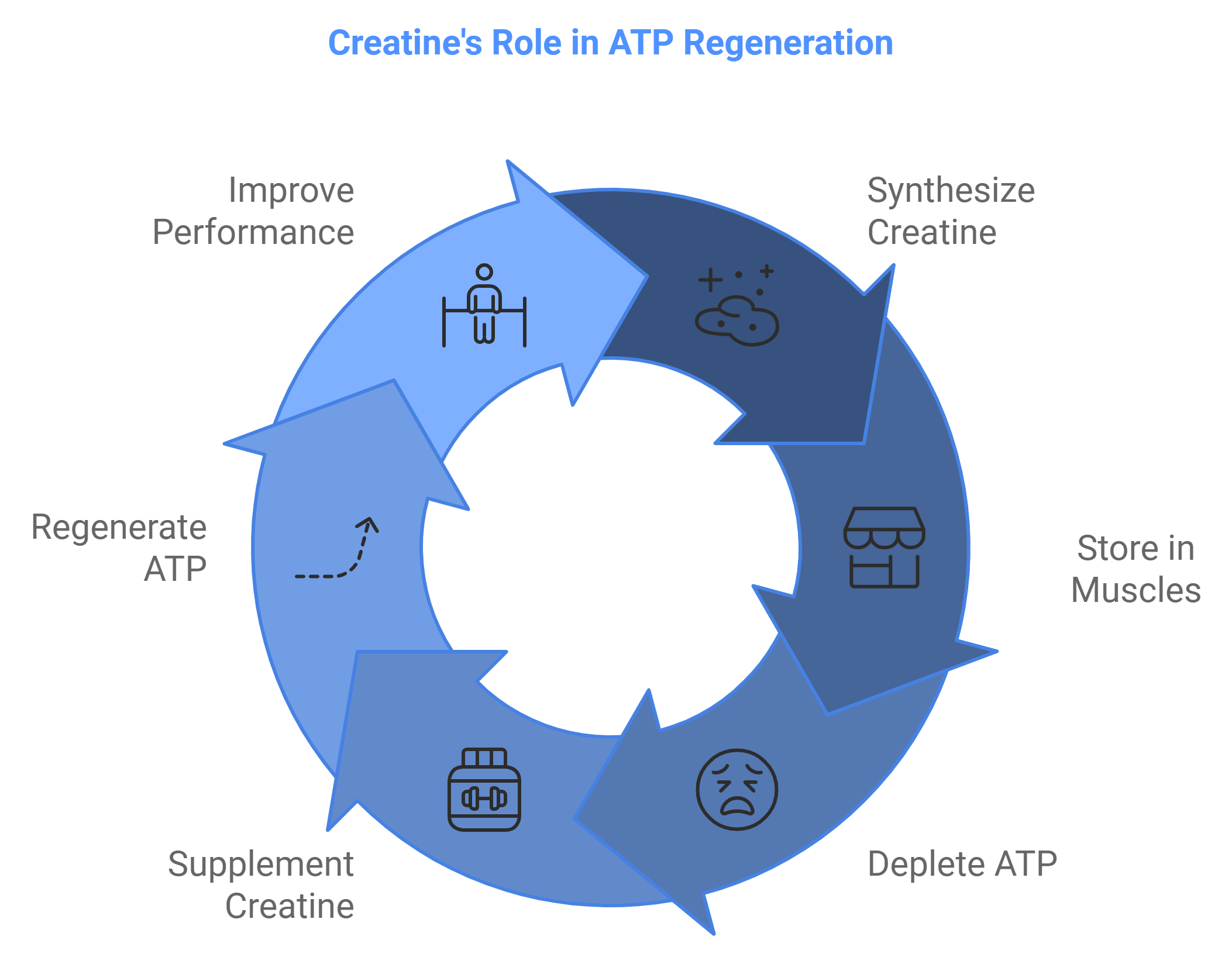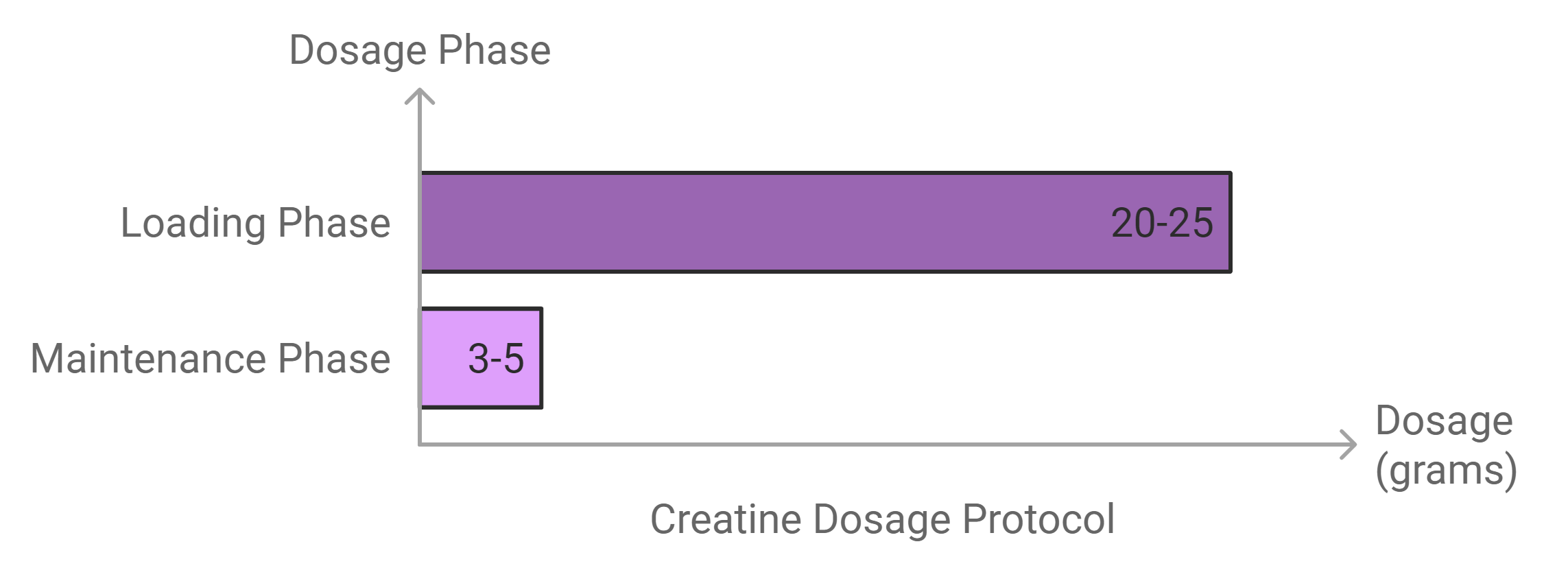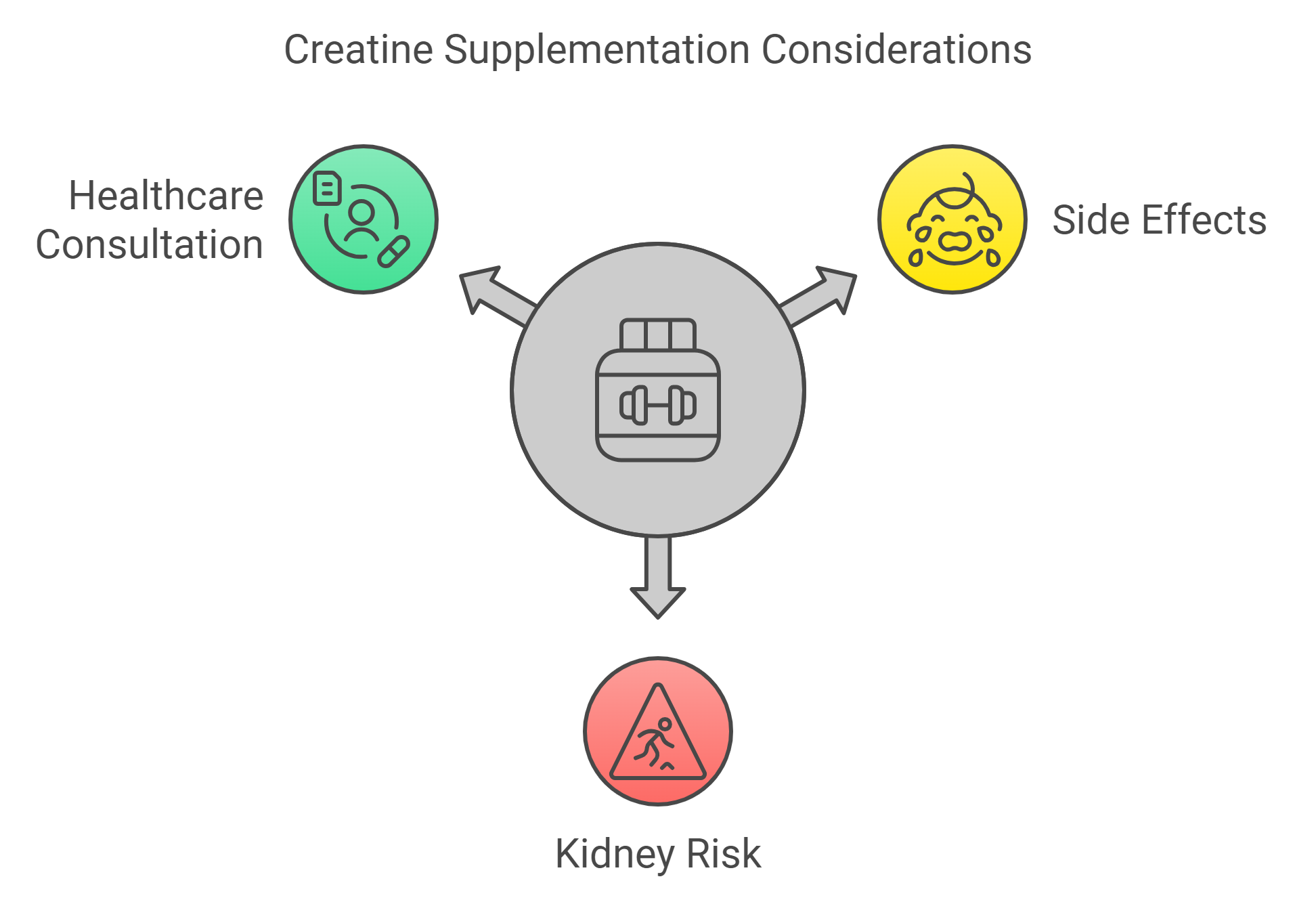How Much Creatine Should I Take?
First-time supplementation or to recoat the storage of creatine warrants a loading phase. For first time users, supplementation dosing would be 20-25 grams a day, divided into four to five doses over 5-7 days. After the initial loading phase, a maintenance dosage of 3-5 grams a day is recommended to maintain a saturated muscle with the needed level of creatine.
What is Creatine, and Why Do People Take It?
How Does Creatine Work in the Body?
Creatine is an endogenous compound synthesized from amino acids within the body and it’s present in large quantities within muscle tissue.
The primary role is to assist the delivery of ATP, or as it is often termed, the cell’s currency. When weightlifting or sprinting, for instance, such large stores of ATP are quickly depleted, ensuring that the time devoted to such activities is greatly limited.
Supplemental creatine increases intracellular ATP regeneration and results in enhanced overall muscular performance, which is the reason why athletes seeking enhancement in strength and endurance likewise among bodybuilders are drawn towards it.

Why People Take Creatine
Creatine is perhaps one of the most highly used supplements to gain muscle mass, boost strength, and even enhance your general performance in various athletic activities. It has been proven that supplementing with creatine increases exercise capacity during high-intensity activity and builds up to lean muscle mass.
Moreover, there have been findings that suggest that it also serves to reduce muscle damage and inflammation due to workout sessions. Besides physical effects, creatine may also work as a neuroprotector, which could help improve your general cognitive health(Gainful\)(Gainful\).
Dosage of Creatine
How to Load Creatine
This loading phase is taken by having 20-25 grams of creatine daily, divided into four or five doses for five to seven days. This will enable fast saturation of the muscles with creatine and users can have the effect sooner.
A more individualized loading dose may also be calculated at 0.3 grams per kilogram of body weight. This is most recommended for those who need rapid performance improvement since muscle creatine levels may increase as much as 10-40% during this phase(Good).
Maintenance Dose
After the loading phase, a maintenance dose of 3-5 grams daily is recommended to maintain high creatine levels in the muscles.
The low dose will ensure that you maintain performance and recovery benefits without extra high daily dosages.
The maintenance dose works perfectly for both males and females, and it’s consistent in different age groups and athletic levels (Benefit Zone) (Benefit Zone).

Creatine Dosage Timings
When to Take Creatine: Before or After Workouts
There are different debates on how long to take creatine before and after the workout. Some studies suggest that its effects of gaining strength and muscle mass occur when taken just before or after the workout.
Still, there are studies showing no difference in the pre- and post-workout administrations. In conclusion, there is an agreement that creatine should be taken near the time of when someone would work out in order to achieve optimal effects (Gainful).
Creatine during Rest Days
During off-training days, it is essential to take creatine supplement to keep the muscles saturated with it. During rest days, timing of creatine is less of an issue, and it can be taken at whatever time it is available.
This approach ensures a daily intake of creatine, regardless of the frequency of training, for physiological benefits produced through its accumulative utilization()
Potential Negative Effects and Precautions
Known Negative Effects
While creatine is generally well tolerated, some may experience adverse side effects, such as bloating, retention of water, or gastric upset-especially during the loading phase.
These side effects are transient and can be countered by reducing the dose or foregoing the loading phase altogether. Taking divided doses during the day will also minimize discomfort(\Gainful\).
Who Should Avoid Creatine?
There are others who have pre-existing kidney disease that are told not to take creatine supplementation because they may increase the possibility of further kidney damage.
Anyone taking medication that affects kidney function or hydration status, such as diuretics or NSAIDs, should discuss supplementing creatine with their healthcare provider before doing so(Gainful).

Frequently Asked Questions
Do I need to do a creatine loading phase?
Although a loading phase speeds up muscle saturation, it is not actually needed. A gradual pace with 3-5 grams per day will work just as good over a longer period.
Does creatine make you gain weight?
Weight gained through creatine is usually due to retention of water in the muscles, not from gaining body fat. The effect is almost more predominant during the loading phase.
Is creatine safe for women?
Yes, creatine is absolutely safe and effective in women, the same as men, and the daily recommended dose applies to both as well.
Do I need to take it every day?
Yes. Taking creatine every day will ensure continuous filling of the muscles with the nutrient for maximum benefits.
Can I take creatine when I am not working out?
While the creatine benefits are at their highest during exercise, supplementing on non-exercise days can still aid muscle health and recovery.

